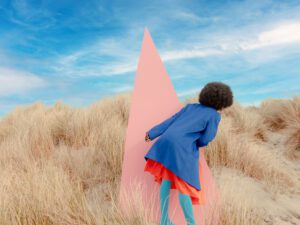It is less than a month to go until the Future Now Symposium, a two-day event which brings together leading organisations to consider the wider social and political context of the arts landscape. The only event of its kind in the UK, it engages with new modes of communication, questioning the wider effects of media stimulation and data dissemination in the digital age, whilst engaging with key contemporary movements through discussions surrounding photography, design, sculpture, painting and journalism.
For example, investigating a world of “alternative facts”, An Examination of Post-Truth features award-winning artist Edmund Clark (b. 1963), who engages with state censorship to explore covert sites of control. In a similar way, Ethics of Content: Art Journalism in the Digital Age brings together leading publications Aesthetica, Frieze, Spectator and It’s Nice That to consider the changing nature of arts coverage and authenticity online.
An interest in the digital age also runs through The Democratisation of Photography, in which PHOTOFAIRS, Open Eye Gallery, Vice/i-D, Royal College of Art (RCA), artist Lottie Davies and Central St Martins highlight the universal presence of images, demonstrating how the medium’s definition has been altered by the internet. Navigating this new landscape, RCA’s session, Postproduction: Manual for Redesigning Reality, highlights the influence of editing, cropping and filtering, assessing what this new way of living might mean for the arts, the environment, the economy, society and individual identity.
Comparably, in discussions such as VR and Data-Influenced Artworks: The New Language of Software, in which Royal College of Art, Anise Gallery, National Science & Media Museum, FACT, Liverpool, and York St John University focus on new media, Future Now examines the impact of new technologies on the creative industries. Lucy Johnston (author of Thames & Hudson’s Digital Handmade) investigates this question from a design perspective in Digital vs Handmade: 21st Century Craftsmanship, which demonstrates how multidisciplinary practices combine the craftsman with the machine. Also looking to the future of time-honoured techniques, Glasgow School of Art’s What is the Future of Painting? offers new perspectives on what it means to use traditional practices in an accelerating world.
Examining design from an environmental angle, in Sustainable Practices: A Material World, Caroline Till (FranklinTill studio and author of Radical Matter) discusses how emerging practitioners are establishing a new wave that recycles with sustainability at its core. The receptive nature of production is further highlighted by the V&A, speaking at Responsive Worlds: The Value of Design. Coinciding with an exhibition entitled The Future Starts Here, the institution ask how industries are transforming to reflect society’s needs, foregrounding growing ecological concerns. Highlighting a need for change, Redressing the Balance: Diversity in the Art World reflects on notions of imbalance from a variety of perspectives. Featuring Serpentine, TAFETA, New Art Exchange and DASH Arts, the session considers how to build a sector where diversity is fully integrated into curation, creation and exhibition.
The Future Now Symposium offers developing practitioners opportunities to build their careers. Alongside How to Get Ahead as an Emerging Artist, a session which offers insight into art prizes from the Aesthetica Art Prize and 2016 winner Rachel Ara, Artnet, Lumen Art Prize, Anise Gallery and York St John University, the event offers a variety of inspiring portfolio reviews and advice sessions.
The Future Now Symposium runs from 17-18 May at York St. John University. Tickets are available here.
Credits:
1. Meagan Streader, Response VII (Partition III), 2017. Site specific installation, 40ft shipping container, electroluminescent wire. Commissioned by Soft Centre and Liverpool City Council, Australia. Photo by Sam Whiteside.





